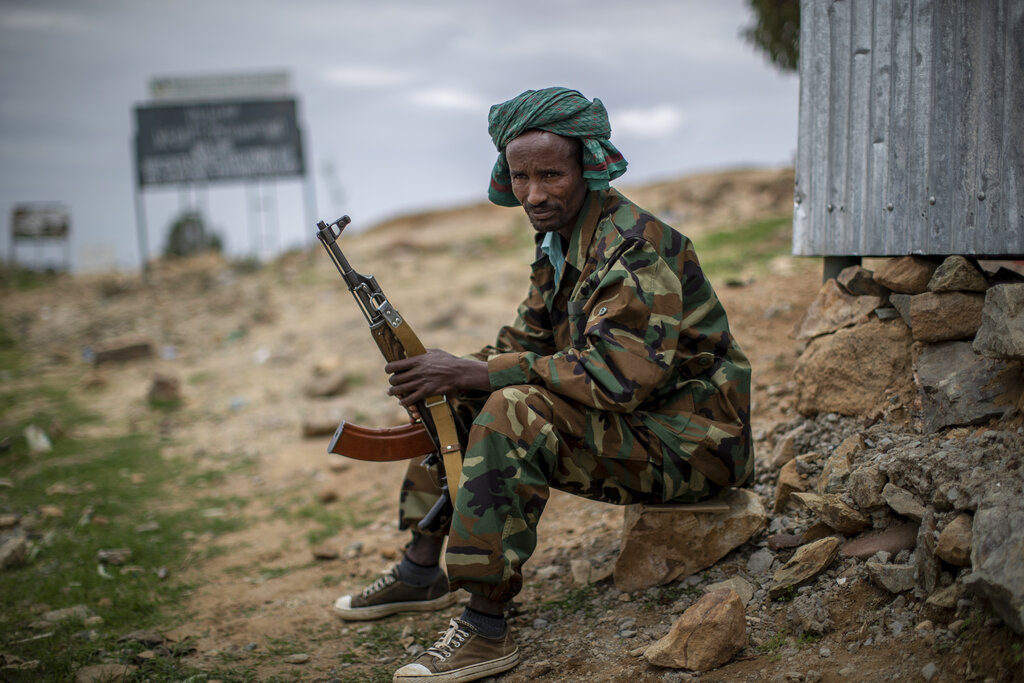Nearly two years after the signing of the Pretoria Agreement that was intended to end the war in Ethiopia, fighters in Tigray remain armed and the threat of violence looms.
An estimated 75,000 to 100,000 Tigrayan People’s Liberation Front (TPLF) fighters carry weapons such as heavy mortars, artillery and machine guns, Amhara News Service reported. In an interview with Lualawi Media, Ethiopian Defense Chief of Staff Field Marshal Berhanu Jula conceded that there is no timeline for their total disarmament.
“It is concerning, but what can [the government] do?” Berhanu said.
Many of these armed fighters are occupying schools, which are used as military encampments. Approximately 550 schools in Tigray remain closed due to the presence of fighters, Anadolu Agency reported.
Berhanu insisted the TPLF does not have large, mechanized weaponry and is “no longer in a position to topple the government by force.” However, he called for international assistance in the disarmament, demobilization and reintegration (DDR) process, saying that “no country in the world” could complete the process without outside assistance.
“DDR requires money,” Berhanu said. “So, the Ethiopian government can’t do that. That’s one thing you need to know. If we say that the DDR shouldn’t be facilitated using funding that could come from outside, the Ethiopian government can’t afford it. It can’t. The annual defense budget of the country isn’t even enough.”
During a September visit to the country, U.S. envoy Mike Hammer emphasized the urgency of launching the DDR program in a conversation with Temesgen Tilahun, the commissioner of Ethiopia’s National Rehabilitation Commission, which is overseeing the process.
“These forces should be completely demobilized, these combatants need to go back to their daily lives, and they want to go back to their daily lives,” he told reporters during a roundtable meeting in Addis Ababa.
Hammer also said the U.N. Development Programme is collecting funds to begin the process. Donors include Canada, the European Union, Japan, the United Kingdom and the U.S. “We know the funding is there for the first tranche, which would demobilize about 75,000 Tigrayan combatants, so let’s get going, let’s make sure that we deliver results that will ensure a lasting peace in Tigray,” Hammer said. “There is no reason or explanation that could be given for returning to violence.”
The total DDR process is estimated to cost $849 million over four to five years. The Ethiopian government will pay for 15% of the program, and donors are expected to fund the remainder.
The Pretoria Agreement called for TPLF fighters to disarm within 30 days. The agreement also called on Eritrean and Amhara fighters to leave the region. Observers say this has not happened, and the continued presence of outside fighters gives the TPLF reason to hold on to their weapons.
“With Amhara militiamen still in western and southern Tigray, and Eritrean troops still inside the border, this condition has not been met,” wrote Fred Harter for Genocide Watch. “Tigray’s leaders are reluctant to disband their fighting force in case fresh conflict erupts.”
The humanitarian toll is enormous. Tigray hosts about 950,000 internally displaced people. Disruptions to the agricultural sector and drought have led to widespread food insecurity. The U.N. estimates it would cost $3.2 billion to feed people in need in Ethiopia in 2024. Many young men are unable to find work, and anger is rising.
“The lack of a discernible peace dividend is fueling disillusionment among young Tigrayans, especially those who fought in the war,” Harter wrote. “The bloodshed is over, but the region still lies in ruins. With its leaders embroiled in political squabbles, some observers fear the drums of war may soon be beating again.”

